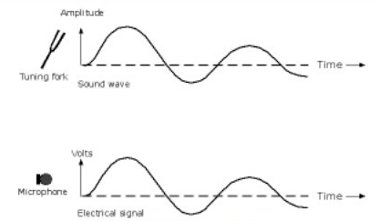The codec
The CODEC has two components: the COder and the DECoder. The COder takes the local sound and vision signals and converts them into a form that can be transmitted over a digital network. The DECoder performs the reverse function i.e. it takes the remote site’s digital signals from the network and converts or decodes them into a form that enables the picture monitor to display images and the loudspeaker to radiate sound from the remote site. A CODEC is thus required at each end of the link for a videoconference.
CODECs can be packaged as plug in PC boards for personal desktop use, within purpose designed complete systems for group conferencing known as “Rollabouts”, or as compact “Portable” units that sit on top of picture monitors.
The electrical signals generated by the camera may after suitable processing be recorded. They may also be displayed on a picture monitor or data display. Similarly microphone signals can be recorded or heard via a loudspeaker. It is also possible to transmit these electrical signals directly to another site. These electrical facsimiles of the sound and picture are termed analogue signals. See Appendix B for more details. Analogue television signals require a network with a huge capacity for transmitting the information, i.e. a very wide bandwidth. Analogue networks are capable of very high quality but can be very expensive to install. They also generally need a dedicated circuit i.e. only available between specific sites for a particular application. For a short link e.g. between rooms, dedicated circuits are cost effective as they can be achieved simply by a length of cable, but for anything further the costs can be prohibitive.
Videoconferencing using analogue methods was established by multinational corporations in the 1980’s, it was also employed by the broadcasters for sports interviews etc. The potential cost savings (multinationals) and the importance of the message (broadcasting) outweighed the high network costs involved. With advances in technology, analogue transmission has virtually ceased; digital transmission is now the norm for videoconferencing and both radio and television broadcasting.
For videoconferencing to appeal to a wider audience it had to prove cost effective. This was solved by the arrival of digital networks that were easily accessible.
Analogue and digital signals are very different. Human senses respond directly to analogue stimuli. A typical example of an analogue signal is shown in Figure 4, the sound wave generated by a vibrating tuning fork. A microphone close by will convert the sound variations into an electrical signal that mimics the original.
The microphone signals vary both in level (amplitude) and frequency (pitch) dependant on the sound being picked up. The electrical signal is a facsimile of the sound wave. Analogue networks therefore need to respond to both amplitude and frequency variations to transmit the information accurately.
Figure 4: Analogue Signals
Digital signals are transmitted as a series of electrical pulses that vary in sympathy to the original signal in various ways, (dependant on the digitisation system in use). The level or amplitude of the pulses is of no significance. Only the presence or absence of a pulse needs to be detected. Digital transmission is thus much more tolerant of poor networks. A basic explanation of digital signals is given in Appendix B.
More information on videoconferencing equipment is available from the document Videoconferencing Audio & Video Equipment.






